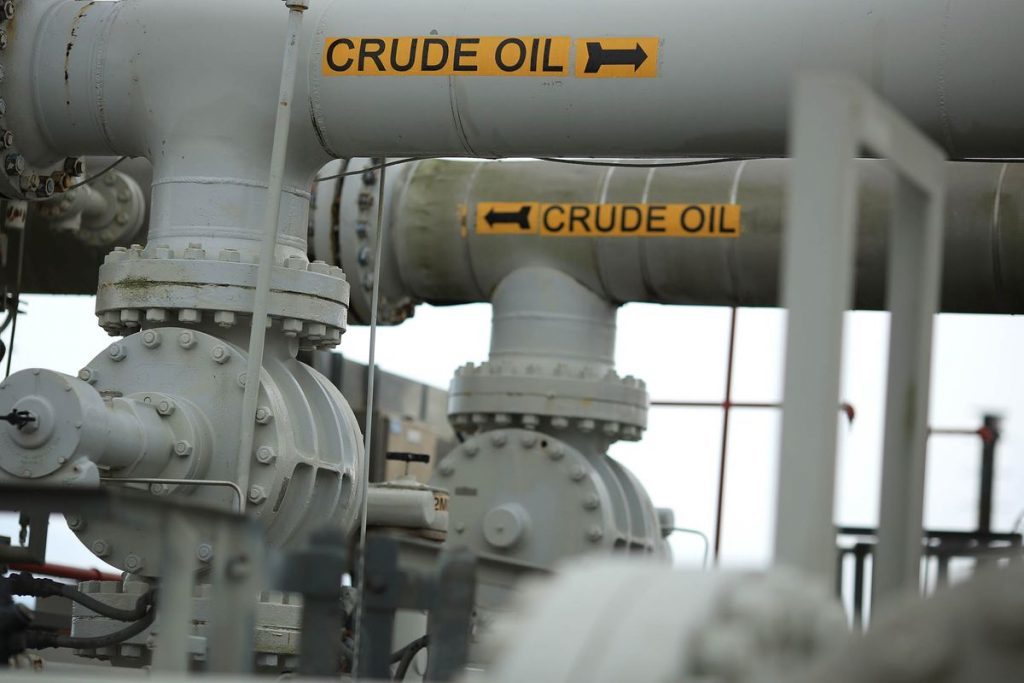
Houston hosted two events this week: the nation’s largest energy conference and the town’s famous rodeo. They have more in common than you’d think.
In both cases, the key for top performers is how efficiently they perform. For cowboys, it means tightly controlling every muscle to stick on a bucking bronco. For energy executives, it means controlling every cost to lower the break-even price and survive what’s been a wild ride on the oil market.
When companies can lower the price at which they break-even, it means they can approve more projects and produce more oil, keeping dividends safe and investors happy. The risk: By drilling up their share price, they can also end up drilling down the price of oil. Welcome to 2017, the year after a two-year market rout made companies more efficient. At the CERAWeek by IHS Markit conference this week, fears of too much supply were palpable.
“Everyone is driving break-even prices down,” Deborah Byers, head of U.S. oil and gas at consultants Ernst & Young LLP in Houston, said in an interview at the meeting, the largest annual gathering of industry executives in the world. “It isn’t just shale companies; it’s everyone, from deep-water to conventional.”
As the conference was ongoing, those fears took physical form as West Texas Intermediate, the U.S. crude benchmark, plunged 9.1 percent this week, closing below the key $50-a-barrel level for the first time this year. It settled at $48.49 on Friday.
The slump came as Scott Sheffield, chairman of Pioneer Natural Resources Co., said prices could fall to $40 if OPEC doesn’t extend its existing agreement to cut production. Shale billionaire Harold Hamm, the CEO of Continental Resources Inc., warned undisciplined growth could “kill” the oil market.
The buzzword was efficiency. In panel discussions and keynote speeches, executive after executive tried to outdo rivals in announcing their low break-even prices. Eldar Saetre, head of the Norwegian oil giant Statoil ASA, told delegates that break even for his company’s next generation of projects had fallen from $70-plus to “well below” $30 a barrel.
“The downturn has been long and painful, but has presented the industry with a unique opportunity to strengthen ourselves,” Saetre said.
He wasn’t alone in noting the new efficiencies. From Patrick Pouyanne of Total SA to Darren Woods of Exxon Mobil Corp., almost every executive commented on the lower break-evens. For some new projects tying back to existing facilities, executives said they could avoid losses even at $12 a barrel. According to Rystad Energy, a Norway-based industry consultant, the well-head break-even costs for U.S. shale plays declined 46 percent between 2014 and 2016.
Re-engineering
Although some of the drop is due to lower costs, including for drilling rigs, steel pipes and other kit, company executives and analysts at the Houston meeting said most is due to efficiency and re-engineering.
Wael Sawan, the head of Shell’s deep-water business, said the company had been able to reduce the cost of its wells by 50 percent over two years. The biggest reason: Shell now uses just four standard well designs worldwide, compared with dozens previously, according to Sawan.
“We are going to see more material cost saving in the next couple of years,” he said in an interview.
With costs down from shale to mega-projects, companies big and small are starting to green-light more investment. Shell for example just approved the Kaikas deepwater oil field in the U.S. Gulf of Mexico, the first to get a go-head from the company in more than two years. The project will make money at less than $40 a barrel after Shell reduced its projected costs by a50 percent.
Total’s 10 Projects
The Total CEO Pouyanne told delegates that his company is planning to approve as many as 10 big projects in the next year and a half. All in all, after two years in a row of lower spending, 2017 is looking like the year that marks the recovery in investment.
“What we are seeing is a really tough retrenching of the cost structure,” Bob Dudley, the head of BP Plc, said in his comments at the meeting. “We will bring on more projects this year than we have in the history of the company.”U.S. shale companies including EOG Resources Inc. and RSP Permian Inc. went even further, telling delegates they plan to boost annual output by 20-30 percent over several years.
The International Energy Agency forecasts daily oil production outside the Organization of Petroleum Exporting Countries will grow by 400,000 barrels in 2017, a turnaround from the contraction of 100,000 barrels it forecast just a year ago. For 2018, the Paris-based IEA anticipates non-OPEC supply to grow by 1.2 million barrels, double last year’s forecast.
Although several reasons may explain why oil prices plunged this week, including another build-up in U.S. crude stockpiles, some traders and hedge funds attributed at least part of the drop to the ongoing CERAWeek discussions on break-even prices.
“Investors remain concerned with supply growth in 2018 potentially putting a damper on commodity upside,” said Tudor, Pickering, Holt & Co., the Houston-based oil boutique investment bank, in a note to clients.
OPEC is watching. Khalid Al-Falih, the Saudi Arabian oil minister, said he was happy to see “green shoots” in the oil industry, but worried some were “growing too fast.” Ryan Lance, the head of ConocoPhillips who spoke later, quipped the shoots referred to by Al-Falih were already becoming “trees.”
Recommended for you
